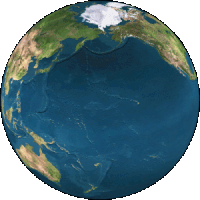| A | B | C | D | E | F | ||
|---|---|---|---|---|---|---|---|
| G | H | I | J | K | L | M | N |
| O | P | Q | R | S | T | U | V |
| W | X | Y | Z |
For more definitions |
|---|
A |
|||
|---|---|---|---|
|
|
|
Learn More. |
(Continued from previuos column) |
B |
|||
(Bioenergy with carbon capture and storage) (Ensuring Electrification in the Public Interest) |
The Biohybrid Breakthrough |
|
|
C |
|||
• Design out waste and pollution |
|
See The Great Barrier Reef |
|
D |
|||
| |
|
||
E |
|||
|
• Read More |
|
|
|
F |
|||
Click • here for more detail. |
(Floatovoltaics) (See • Desulfurization.) |
(Frontier Observatory for Research in Geothermal Energy) |
Solid Oxide Fuel Cells |
G |
|||
|
Carrier and Beyond) |
If the recent report from the Intergovernmental Panel on Climate Change is to be believed, humanity has just over a decade to get carbon emissions under control before catastrophic climate change impacts become unavoidable. • Read all about it here. |
• Join the movement to stop this practice. |
|
H |
|||
|
|
|
|
|
I |
|||
| |
|
• Generators connected to the electricity grid in parallel mode, meaning they can generate power independently in the event of a grid power outage |
|
J -K |
|||
| |
|
||
L |
|||
| |
|
or Lethal Dose (LD50) |
(See: • high-level radioactive waste.) |
M |
|||
| |
|
Learn more. |
|
N |
|||
|
|
(Continued from the previous column) |
||
O |
|||
| |
(Continued from rthe previous column) |
|
|
P |
|||
|
|
(Continued from the previous column) |
|
|
R |
|||
| |
Hydrogenation-Derived Renewable Diesel |
||
S |
|||
| |
Generation (SAPG) |
 If it's good enough for Popeye, it's good enough for solar. Click the image to learn about this suprising breakthrough. To learn more about this technology, click biohybrid here. If it's good enough for Popeye, it's good enough for solar. Click the image to learn about this suprising breakthrough. To learn more about this technology, click biohybrid here. |
|
T |
|||
| More Here |
|
|
|
U -V |
|||
| |
|
||
W-Z < |
|||
| |
Tidal Energy) |
|


